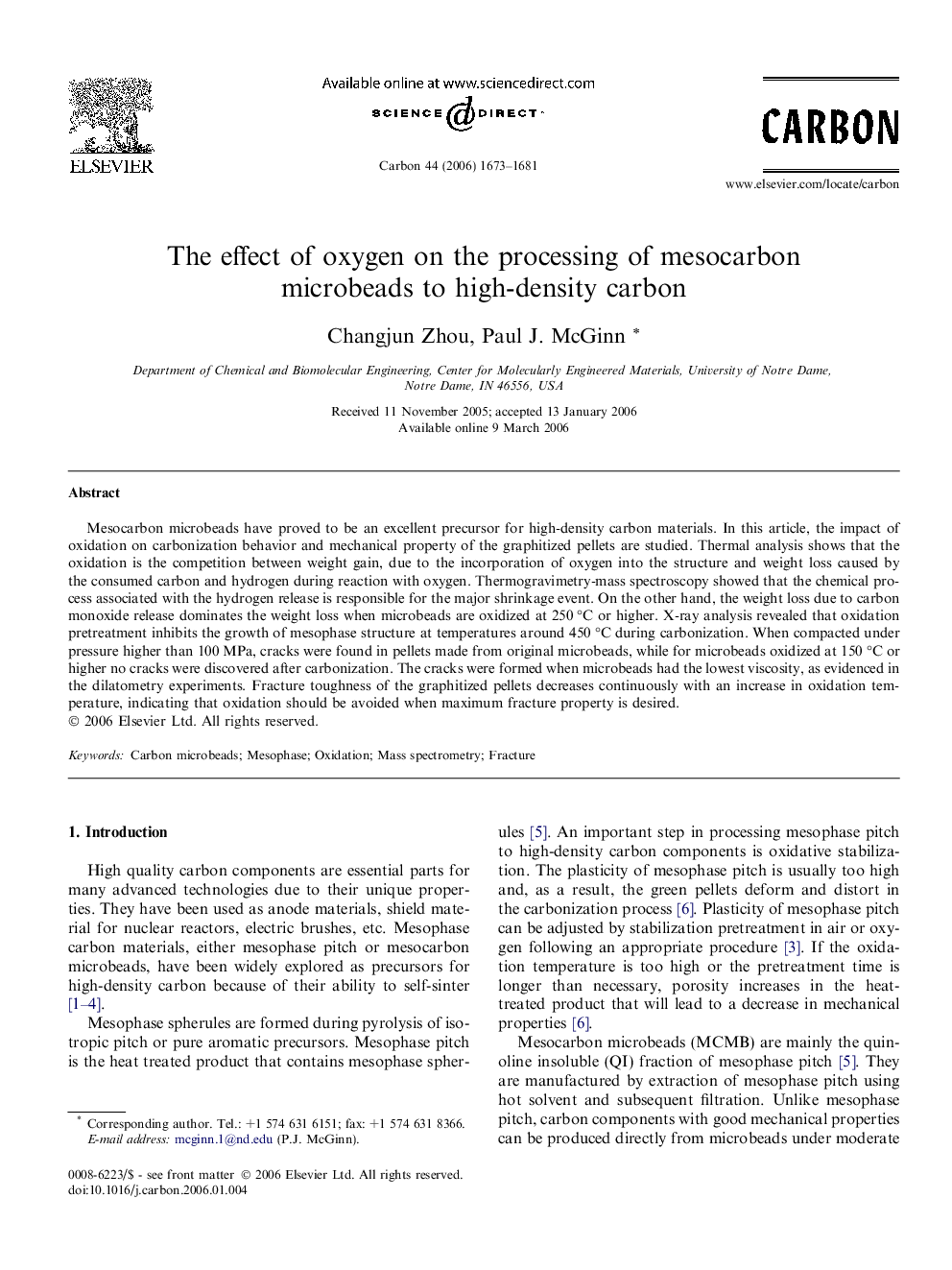| Article ID | Journal | Published Year | Pages | File Type |
|---|---|---|---|---|
| 1418559 | Carbon | 2006 | 9 Pages |
Abstract
Mesocarbon microbeads have proved to be an excellent precursor for high-density carbon materials. In this article, the impact of oxidation on carbonization behavior and mechanical property of the graphitized pellets are studied. Thermal analysis shows that the oxidation is the competition between weight gain, due to the incorporation of oxygen into the structure and weight loss caused by the consumed carbon and hydrogen during reaction with oxygen. Thermogravimetry-mass spectroscopy showed that the chemical process associated with the hydrogen release is responsible for the major shrinkage event. On the other hand, the weight loss due to carbon monoxide release dominates the weight loss when microbeads are oxidized at 250 °C or higher. X-ray analysis revealed that oxidation pretreatment inhibits the growth of mesophase structure at temperatures around 450 °C during carbonization. When compacted under pressure higher than 100 MPa, cracks were found in pellets made from original microbeads, while for microbeads oxidized at 150 °C or higher no cracks were discovered after carbonization. The cracks were formed when microbeads had the lowest viscosity, as evidenced in the dilatometry experiments. Fracture toughness of the graphitized pellets decreases continuously with an increase in oxidation temperature, indicating that oxidation should be avoided when maximum fracture property is desired.
Related Topics
Physical Sciences and Engineering
Energy
Energy (General)
Authors
Changjun Zhou, Paul J. McGinn,
